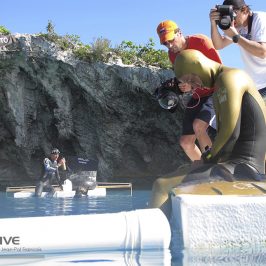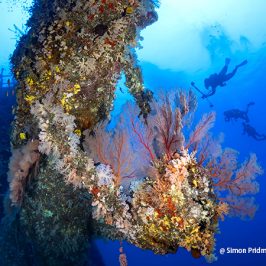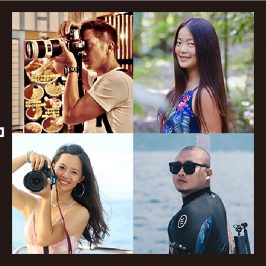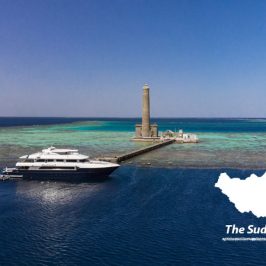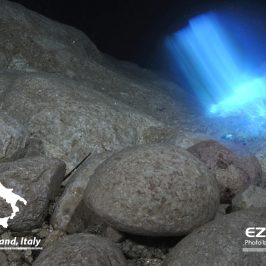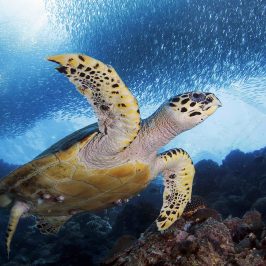Visit what could be the birthplace of underwater colonies that support human life as well as wrecks and picturesque lighthouses that is truly the pride of any traveller’s braglist.
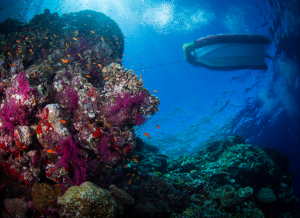
Text and Photo by Tony Ho
Oceanography pioneer Jacques-Yves Cousteau constructed underwater structures to prove that it’s possible for humans to live in underwater villages without interruption for extended periods of time, at increasing depths.
Three habitats at various depths were constructed between 1962 and 1965, but two of them were removed shortly after, leaving only the Précontinent II to be the only physical reminder of the experiment located near the Sha’ab Rumi, off the Red Sea near the coast of Port Sudan.
Cousteau’s movie – World Without Sun – won an Academy Award for Best Documentary Feature in 1964 documenting the first manned undersea colony where six oceanauts lived in a star-fish shaped house for 30 days at 10 meters. The men were supported by a large round-the-clock support crew that provided air, water, food, power and all essentials of life.
Jacques-Yves Cousteau eventually gave up further experiments because he didn’t want to support the petrol industry, but instead, dedicated his career to the exploration and protection of the world’s oceans.
Now divers can visit the only remaining part of the heavily coral encrusted habitat Précontinent II, erected quietly on the white sand at 13 meters deep. The “starfish” six-meter in diameter structure still has its rails and windows kept intact for us divers to penetrate. A few meters deeper are the shark cages, covered with coral and crustacean. We couldn’t believe we were playing in this underwater experimental habitat built around half a century ago.
Clearly Sudan is a great diving destination and a rare gem in the diving world, endowed with ideal diving conditions, underdeveloped fisheries and plentiful fish stock. During the 7-day liveaboard adventure, few boats came in sight. There is no helicopter rescue nor hyperbaric chamber in Sudan, so the dive masters are strict with divers.
Many divers bypass Sudan thinking that it is chaotic and war-torn, but it is south Sudan that is in disorder; north Sudan remains relatively stable. Diving season is from November to May, with best conditions from February through April when temperatures get about 30 degree Celcius. There are altogether seven liveaboards that serve Sudan, after the diving season, these boats would then ply the Egyptian coast.
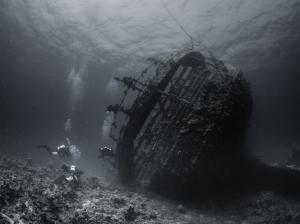 Considered one of the finest wreck dives in the world, the Umbria Wreck was built in 1912 in Hamburg. This Italian war supply vessel was sunk in 1940 with a huge cargo of bombs and weaponry, so that it would’nt end up in the hands of the British.
Considered one of the finest wreck dives in the world, the Umbria Wreck was built in 1912 in Hamburg. This Italian war supply vessel was sunk in 1940 with a huge cargo of bombs and weaponry, so that it would’nt end up in the hands of the British.
The wreck now lies in shallow waters at a minimum of 5 meters up to a maximum depth of 35m. Due to the wonderful visibility of up to 30 meters, you can clearly see the whole ship nestled on the seafloor on entry, the spectacle is rather grand but some divers find it errie. It takes at least three dives to fully explore and appreicate the entire wreck.
There are five large storage rooms perfectly keeping the bombs, timber, and cases of wine. Three Fiat 1100cc cars remind us of the era past. Despite 70 years of saline corrosion, all frames – inside and out, retained its form and is a picturesque scene for photography. Be careful with your fins when you enter the wreck, do not kick up the silt at the bottom and ruin the visibility. Divers can swim around the ship, go into the restaurant, and marvel at the sight of a giant propeller standing at least three-storeys high.
At Sanganeb all liveaboard boats will dock by the famous British-built lighthouse, which resembles a smaller version of the Eiffel Tower. It is far away from the mainland and stands loftily on the atoll. After climbing over 200 steps, one can get a bird’s-eye-view of the splendid atoll that looks like a giant jade embedded in the dark blue sea. This breathtaking scene will definitely leave an indelible impression.
Free divers will fully appreciate the limpid sea at the edge of atoll, the area is marvelous for photographing free diving and half-half photos aginst the shimmering sunlight. The seabed can be appreciated 40 meters above the surface.
Sudan is an authentic diving experience not to be missed. Hammerheads constantly appear here, and often in groups. Sundry white tip sharks and silky sharks are frequently spotted as well, not to mention giant Napoleon, schools of bumphead parrotfish, 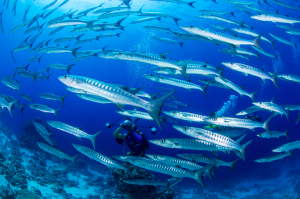 barracuda, snapper, sweetlips and turtles; primitive corals also thrive in large schools. Diving in Sudan, you might be forgiven for thiking that you are diving in a large fish tank because of its supererb visibility, with pleasant encounters at every turn.
barracuda, snapper, sweetlips and turtles; primitive corals also thrive in large schools. Diving in Sudan, you might be forgiven for thiking that you are diving in a large fish tank because of its supererb visibility, with pleasant encounters at every turn.
Getting there:
Most international airports fly to Dubai. Take Dubai Airlines to Sudan Port. You can apply for a transit visa at Dubai airport during the stay.
Visa:
Sudan visa is commissioned to liveaboard companies on condition that no Israeli visa is on your passport. Upon arrival, the staff of the liveaboard will pick you up. Your passport will be held temporarily by Sudan immigration office until your departure. No drones are allowed in the country and it may be confiscated if found in your possession.
Language:
Most Sudan locals can speak simple English. English is widely spoken on liveaboards.
Currency:
Local currency is Egyptian Pound (EGP). USD 1 = EGP 7.8. Euros are also accepted on the liveaboard.
Electricity:
European standard outlet.
Diving Operator:
Cassiopeia Andromeda – www.cassiopeiasafari.com
blue o two – www.blueotwo.com

